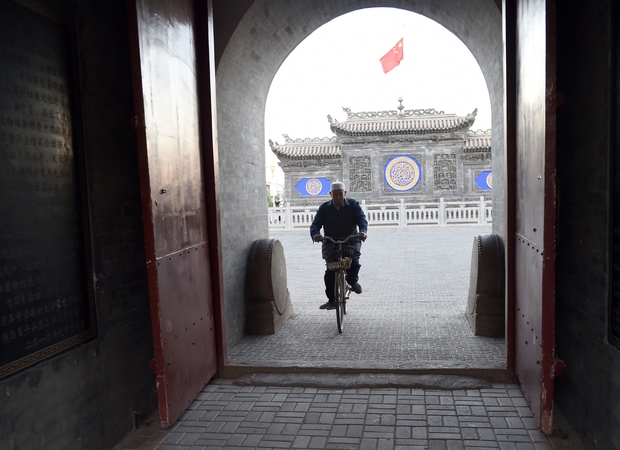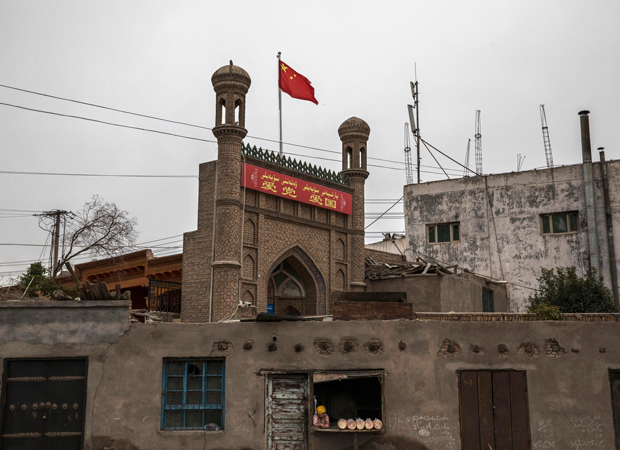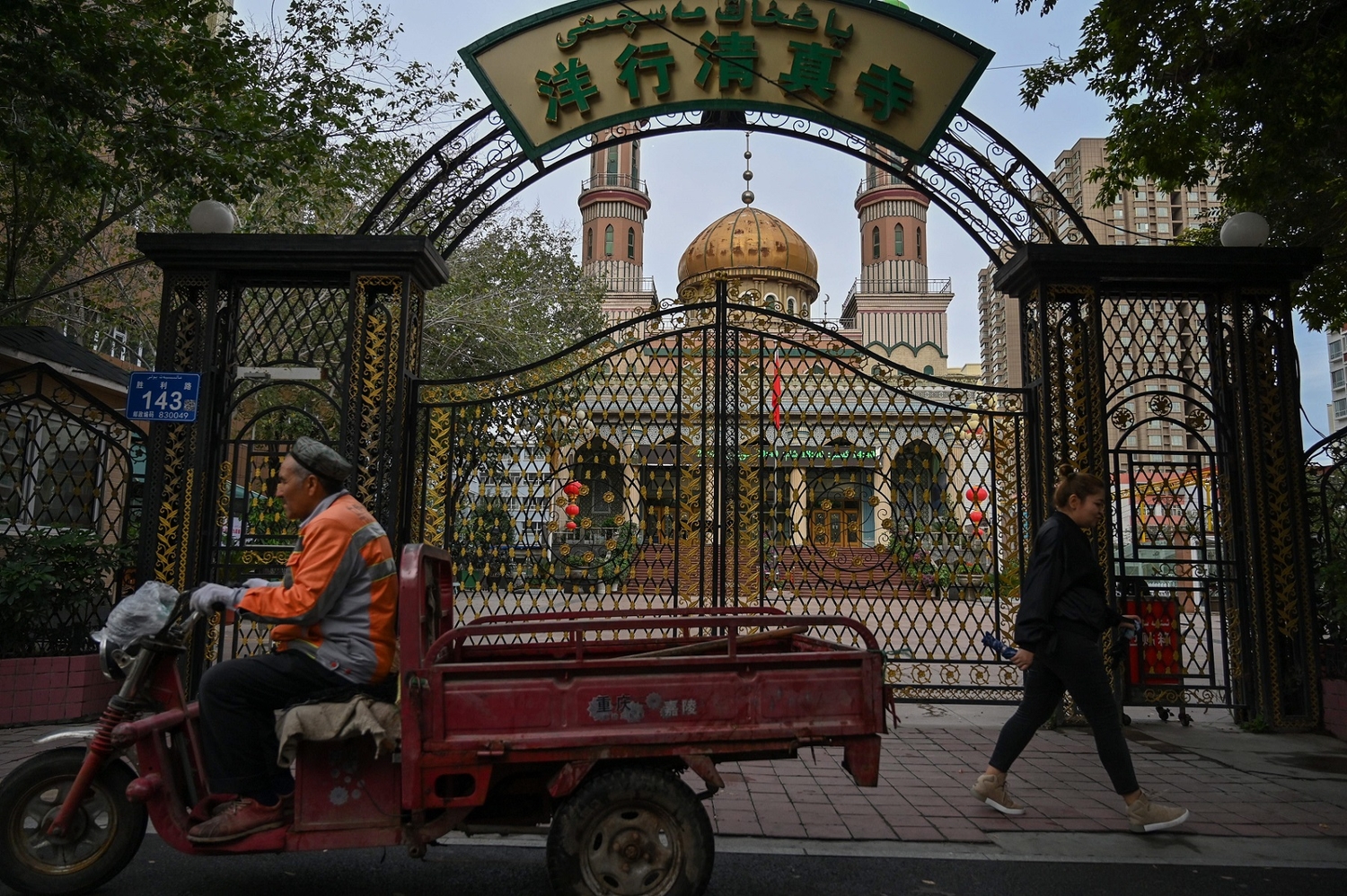Authorities in the Xinjiang Uyghur Autonomous Region rang in 2024 by announcing an update to the region’s strictures on religious practice. Changes include new rules to ensure that sites of religious worship, like mosques, look adequately “Chinese,” and to mandate the cultivation of “patriotic” religious leaders.
Officials have long levied restrictions on religious belief and practice in the Xinjiang Uyghur Autonomous Region (XUAR), but the new provisions still represent a significant change. The XUAR enacted the first iteration of the Xinjiang Regulations on Religious Affairs in 1994 and amended it in 2015. Beijing has also been pushing for the “Sinicization” of Muslim religious buildings for the last several years. Therefore, the newest amendments to the religious regulations, which came into effect on February 1, 2024, do not represent a wholesale change in the government’s approach to the region, but rather the further codification of constraints on religious practice and the assurance of even harsher punishments for those who violate them. Despite enshrining religious freedom in its constitution and official pronouncements, China has seen a continued decline in the space available for religious practice.
While the Party-state’s restrictive approach to religious affairs has indeed intensified under the leadership of Xi Jinping, China’s leaders have not changed their general attitude towards religion since the early 1980s. Viewed from today’s perspective, the 1980s looks like a golden age of religious revival in China, especially in comparison to the denigration of religious practice during the Cultural Revolution. Nevertheless, the 1982 Party directive known as Document 19 clearly states that religion is a vestige of history, an instrument of oppression by feudalists, reactionaries, and capitalists, and that eradicating religion in China would be a lengthy endeavor. It appears that Xi’s administration hopes to expedite this process.
When the regional government first issued the Xinjiang Regulations on Religious Affairs in 1994, Beijing was increasingly concerned about rising anti-government sentiment among Uyghurs as well as the perceived threat of “radical” Islam flowing into China via Pakistan, particularly after the bombings in Ürümqi and Kashgar in 1992. The State Council issued the first Religious Affairs Regulations directed at the national level a decade later in 2004. However, the promulgation of distinct religious affairs regulations for the XUAR underscores the region’s significance to the central government; no other province or autonomous region in the People’s Republic of China has comparable regulations. Although the regulations apply to a specific geographical region, and not Islam per se, a quick glance at Xinjiang’s demographics shows that they predominantly impact Muslims. According to the 2020 census, Xinjiang’s total population of 25.9 million comprises a Han population of 10.9 million Han Chinese and 14.9 million “minorities,” most of whom are Uyghur and predominantly Muslim. (In 1994, these proportions would have been tilted even more towards Uyghurs.) However, it is worth noting that Articles 33 and 38 of the Regulations also explicitly address the inheritance and succession of living Buddhas, which might be surprising considering that Buddhism is not particularly prominent in the region.
Officials enacted an updated version of these regulations in 2015, almost certainly in response to violent incidents that occurred in Beijing and Kunming in the years prior. In both cases, what appeared to be isolated groups of Uyghurs attacked civilians in crowded, and in the case of Beijing, highly symbolic locations. The government labeled these attacks terrorism and attributed them to Muslim Uyghur separatists. Accordingly, the 2015 regulations contained numerous references to the so-called “three evil forces” of terrorism, separatism, and religious extremism.
Notes from ChinaFile
12.13.22
Planting the Flag in Mosques and Monasteries
This year’s amendments to the Regulations place a heavy emphasis on the Sinicization of religion. Xi initially proposed this framing at the National Religious Work Conference in 2016, where he highlighted the need for China’s religions to “adhere to the path of Sinicization” and embody the nation’s unity, patriotism, and “excellent traditional culture.” The Party has since incorporated these ideas into its own doctrine: the State Administration for Religious Affairs (SARA), previously a government institution but formally folded into the Chinese Communist Party (CCP) in 2018, has issued seven distinct management measures (管理办法, guanli banfa) addressing various aspects of religious affairs, nationally. These include measures related to religious groups (2020), the Hajj pilgrimage (2020), religious clergy (2021), religious educational institutions (2021), online religious information services (2022), and venues for religious activity (2022, 2023). Given this context, it is hardly surprising that some provisions from these measures appear in the 2024 Xinjiang Religious Affairs Regulations. Article 5 of the amended Regulations explicitly calls for religious institutions and individual adherents to “practice core socialist values” and “adhere to the Sinicization of religion in China.”
Viewpoint
12.28.18
‘Now We Don’t Talk Anymore’
Article 26, one of the most extreme additions to the 2024 amendment, stipulates that “Religious activity sites that are newly built, renovated, expanded, or rebuilt should reflect Chinese characteristics and style in terms of architecture, sculptures, paintings, decorations, etc.” Its appearance follows years of reporting from across China documenting the Party-state’s removal of distinctive architectural features of mosques, such as domes, minarets, and even crescent symbols, which the Party-state views as reflecting foreign or even “radical” influence over domestic religious adherents. And it bears a striking resemblance to Article 50 of the 2023 SARA Administrative Measures for the Management of Religious Activity Venues, which states: “Religious activity venues should integrate Chinese culture and reflect Chinese style in terms of architecture, sculpture, painting, decoration, etc.” In this way, Article 26 of the new amendments illustrates a larger trend of the Party issuing its objectives in the form of “measures” which then make their way into state laws and regulations.
However, the 2024 XUAR regulations may not represent the culmination of this codification process. Xinjiang is often used as a testing ground for religious policies, which may eventually be incorporated into national-level regulations. The 2017 revision of the national-level Religious Affairs Regulations, for example, incorporated wording similar to that found in Article 5 of the 2015 XUAR regulations. In the newest national-level Regulations, Article 63 prohibits “advocating, supporting, or funding religious extremism, or using religion to harm national security or public safety, undermine ethnic unity, divide the nation, or conduct terrorist activities and separatism.” Prior to 2017, these Regulations did not explicitly mention separatism or terrorism.
This practice of ex-post codification of pre-existing practices is not a novel phenomenon in China. Authorities took similar action in 2018, when they amended Article 33 of the Xinjiang Regulations on De-extremification to refer to the so-called “vocational education and training centers,” a euphemism used by the Chinese government for the incarceration camps that began operating in the region in 2016.
The recent amendment to the Xinjiang Regulations on Religious Affairs introduces a new chapter dedicated to institutions providing religious education. Such schools must “reflect Chinese characteristics” and are tasked with nurturing “patriotic religious talents” who can reliably interpret religious doctrines. Comparable provisions can be found in the 2021 SARA Management Measures for Religious Education Institutions. Through these rules, the Party-state seeks to utilize religious education for its own goals, aiming to influence a substantial segment of China’s populace that might otherwise acknowledge the presence of an authority higher than the Communist Party of China: According to the 2019 State Council Information Office white paper “Seeking Happiness for People: 70 Years of Progress on Human Rights in China,” there are nearly 200 million religious believers in the country. In the same year, CCP membership was approximately 92 million.
The 2024 amendment also introduces new articles (Articles 51-52) specifically regulating “Internet religious information services.” These articles mirror provisions outlined in the 2022 SARA Measures for the Administration of Internet Religious Information Services, calling for religious affairs government departments to increase oversight over religious information services, prohibiting online proselytizing, and mandating that providers of online religious services register and verify the identities of their users.
The updated Regulations also exemplify the ways in which “national security” concerns have colored how the Party-state regulates all aspects of citizens’ lives. The Regulations represent an escalation in administrative oversight over religious affairs and threaten more severe penalties for non-compliance. For example, penalties for breaches of specific provisions, such as conducting large-scale religious activities without prior authorization, can lead to fines as high as 300,000 renminbi (U.S.$41,670), along with personal repercussions for the individuals involved.
The latest amendments to Xinjiang’s religious regulations take place in the context of the Party-state’s larger project to use the “rule of law” to validate and consolidate the leadership of the CCP. In the CCP’s telling, the Party itself is the guarantor of rule of law, or, more specifically, “socialist rule of law with Chinese characteristics.” At heart, this project seeks to protect the dominance of the CCP’s ideology and prevent any challenges to its control, both internally and from external influences—including religion. Thus establishing a “rule of law” system involves enacting new laws and regulations that govern the conduct of religious activities within the country, functionally secularizing religion and restructuring religious groups’ organizational frameworks to reflect the Party-state’s own administration, while enumerating clearly defined tasks, responsibilities, and punitive measures. An illustrative example in the 2021 SARA Management Measures for Religious Education Institutions is the requirement for these institutions to “provide necessary conditions for Chinese Communist Party members among faculty and staff to establish grassroots Party organizations and carry out activities” and for these institutions to provide education on Xi Jinping Thought on Socialism with Chinese Characteristics for the New Era, socialist core values, and “rule of law.”
By incorporating these non-religious elements into religions, stripping them of their remaining spirituality, and implementing management control systems within religious institutions, the CCP is intentionally trying to create an antithesis of religion. It aligns with Xi’s 2016 call at the National Religious Work Conference to develop a “Socialist Religious Theory with Chinese Characteristics.” This term echoes other concepts like “rule of law with Chinese characteristics” or “human rights with Chinese characteristics,” highlighting a pattern of significantly altering established terms by weakening their original meaning and challenging their universality.
The Constitution of the People’s Republic of China explicitly prohibits discrimination and oppression against any nationality, and guarantees all its citizens the freedom of religious belief. Despite these constitutional protections, a significant number of observers, including United Nations bodies, international NGOs, and think tanks have consistently highlighted a more troubling reality that Xinjiang’s new religious rules make official policy. Moreover, with each amendment to the religious regulations, the space for religious practice appears to shrink further. This raises concerns that China is gradually approaching its ultimate goal, set a few decades ago: to become an atheistic country with the CCP as the only authority.




